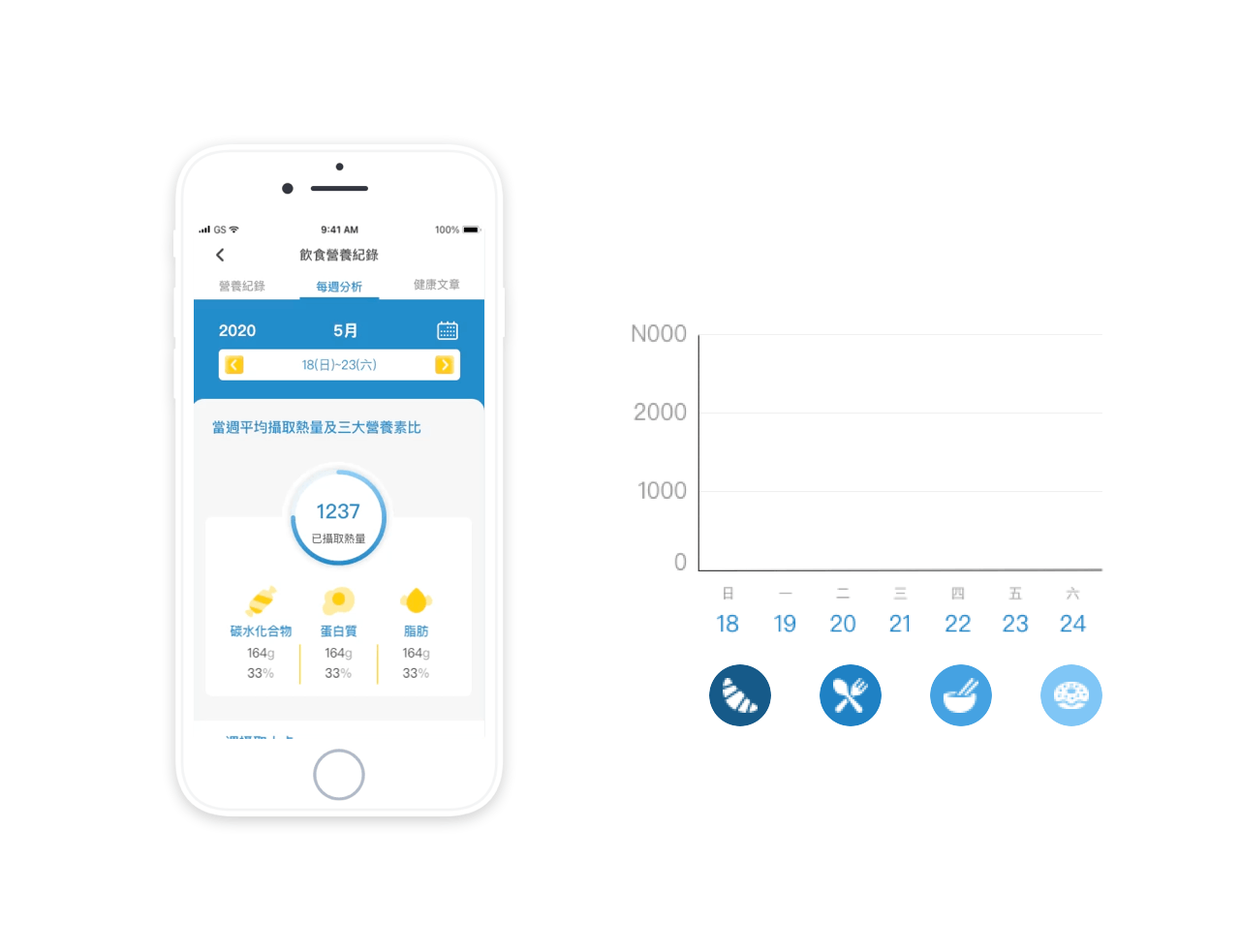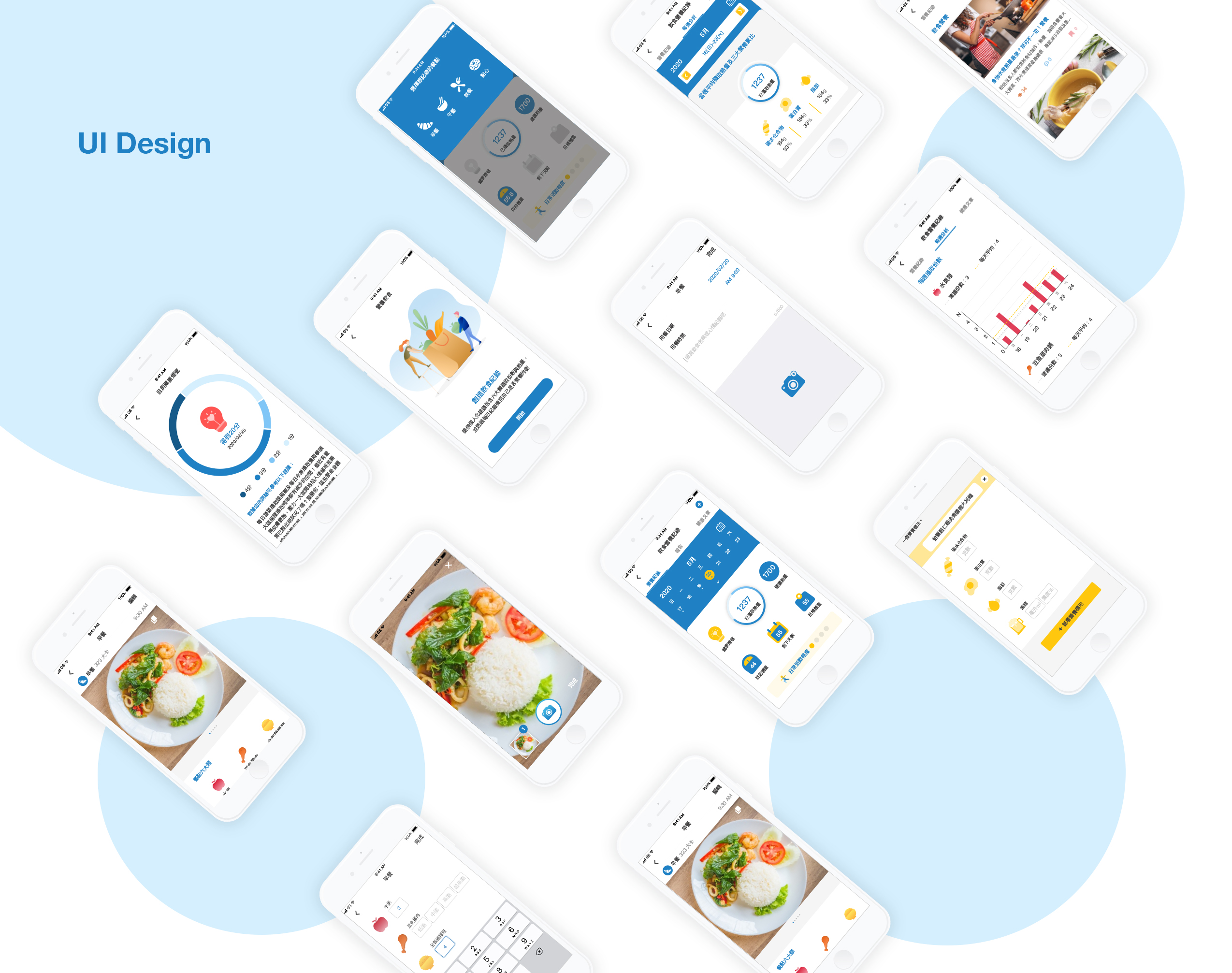Background
The company sells health examination programs from major hospitals, and diet records are a part of health promotion. We hope to help users keep daily diet records, help maintain weight, lose weight, gain weight, etc., through the calculation methods of six categories of food, guide Users make daily calorie calculations or food records.
I found that there are still many problems that need to be clarified in the needs provided by PM. Summarize the following points :
-
Learn basic nutrition knowledge first
-
Ask a professional nutritionist.
-
Establish core goals and solve problems
-
Observer other competitive products.
-
The technology of unidentified food AI heat makes it difficult to develop core functions.
-
The target user is not defined.
Based on the above points, we will conduct relevant research and analysis, hoping to discuss the best solution.
Competitive Analysis
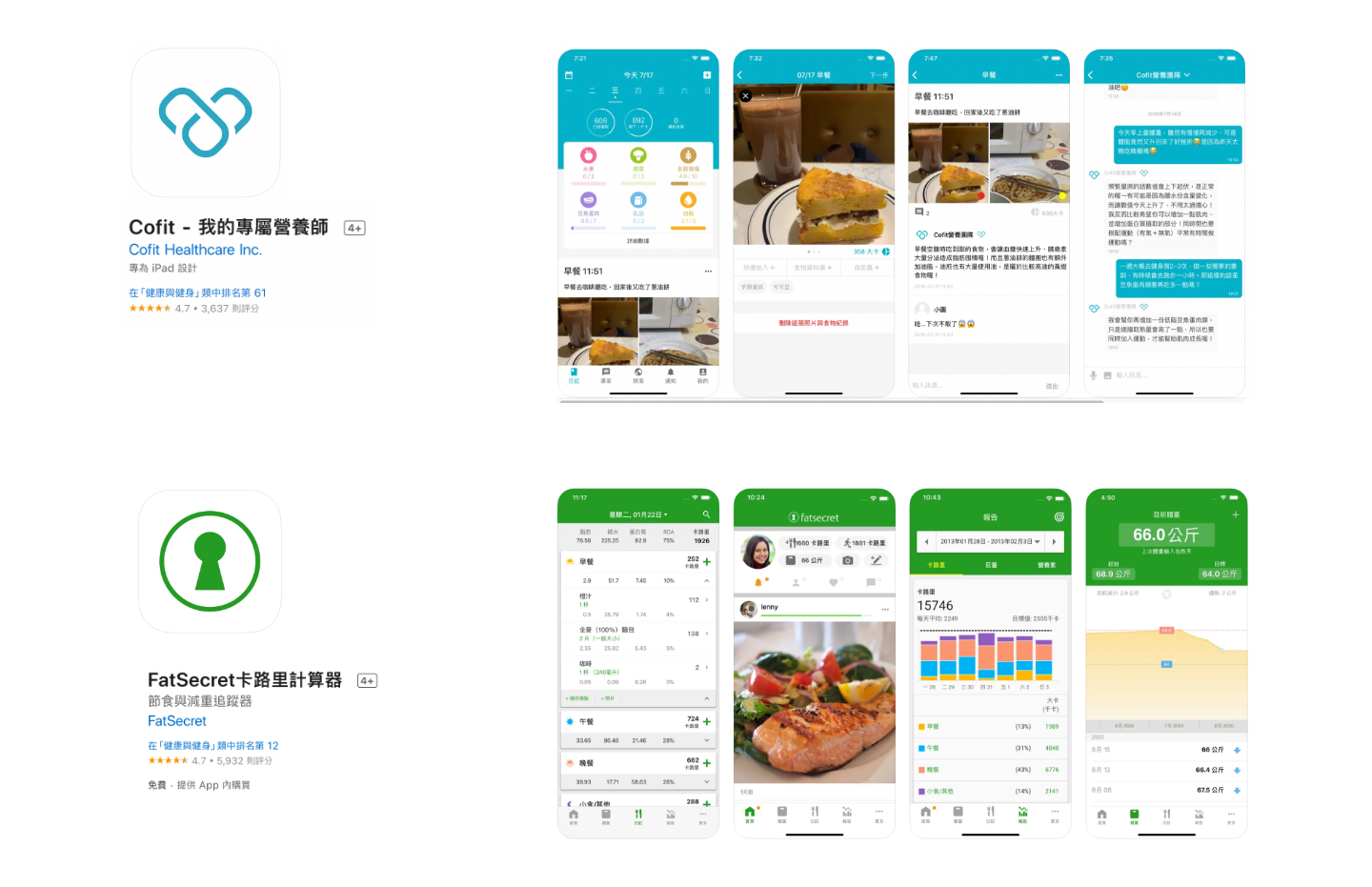
Compared with other products, it is technically impossible to identify food with AI technology, and it is impossible to buy a third-party food calorie database for money. It is also found that competing products still have differences in calculating heat.
During the interview with nutritionists, we found that nutritionists will use visible tools to help customers learn to calculate calories. The most common are hands, spoons, bowls and cups.
We set the core goal of the first stage to help users understand the six categories of food and estimate the heat of tools that can be seen everywhere.
Expert Interview Insights
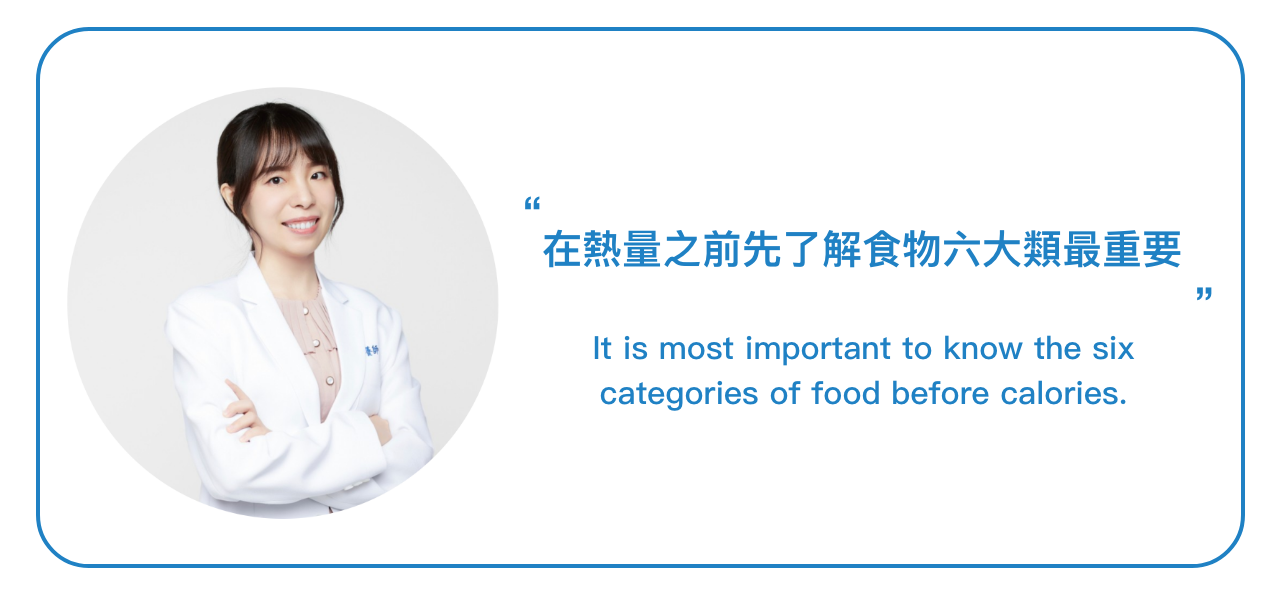
1.How do you know the six categories of food?
Understand the nutritional value of food, and judge whether it can effectively control calories before eating.
2.What measurement tools are used?
In the absence of any measuring tools, it is recommended that users can do simple calorie calculations with personal palms, fists, fingers and other widths.
3.How to convert the heat formula?
The most suitable conversion formula is discussed by dietitians, designers and engineers.
User story & Persona
To understand past clinical experience through expert interviews, users can be divided into three backgrounds. After measuring resources, inexperienced and experienced users will be locked :
1.Inexperienced: I want to try to control weight, nourish the body, and understand food nutrition
2.Experienced: I have used health-related records, had a basic understanding of nutrition consultation, and needed an advanced food database.
3.Special circumstances: pathological recuperation, special needs, athletes…etc.
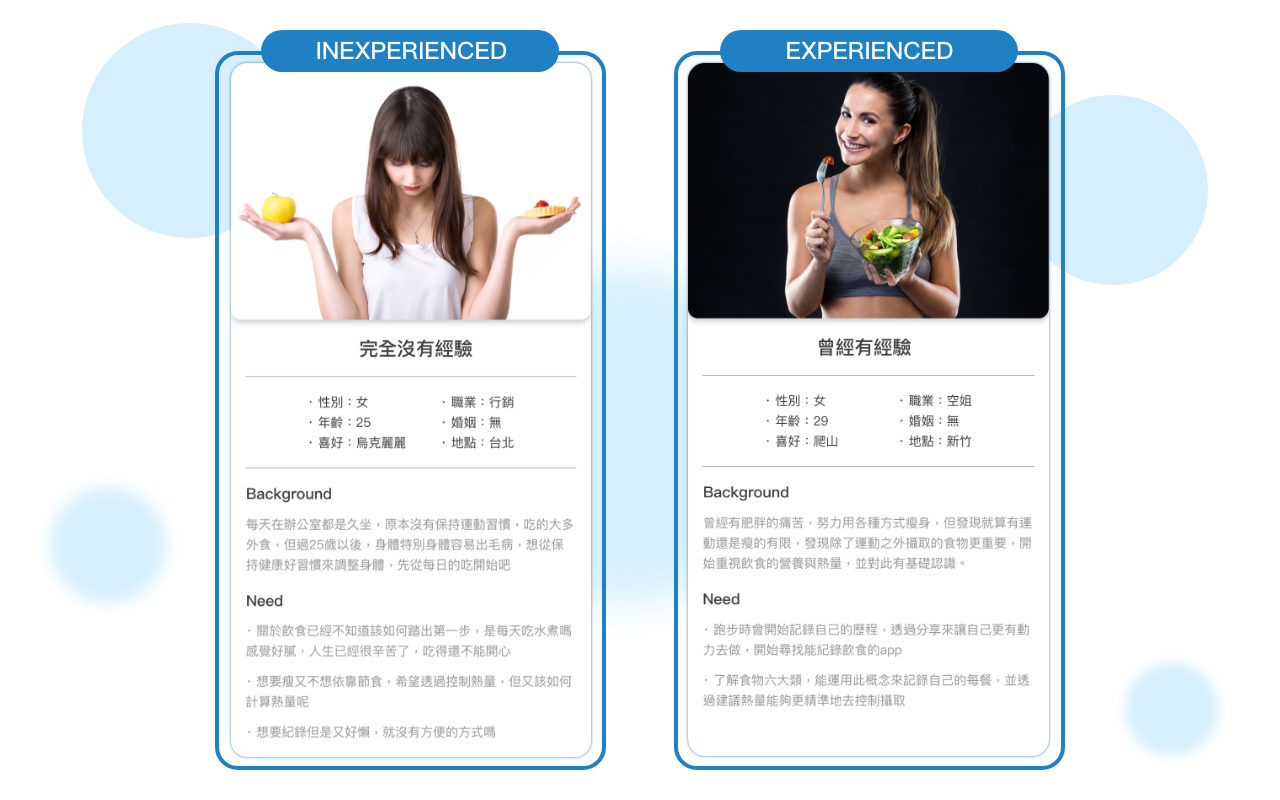
Finally, we discuss the possible prototype outline of users to help us create initial needs.
1.Not experienced at all: most of them are women, about 26 to 40 years old, and most of them want to pursue more beautiful, irregular exercise, bad lifestyle, such as staying up late, etc. for their posture;
2.I have experience: most of them are women, about 20 to 45 years old, have been obese, have tried various unhealthy ways to lose weight, but often gain weight, and want to seek professional and healthy methods, etc.
Define Requirements
According to Persona, we discuss the core value and derive core functions, secondary functions :
1.Target weight : it will be set to meet the needs of weight loss, weight gain, maintenance and others.
2.Support extra-food: it can help ex-eating people quickly calculate calories.
3.Partial experience: The targeted ethnic group will target those who are inexperienced and part of the primary to intermediate needs.
4.Convenient recording: provide different records, such as text, photos.
5.Simple and easy: the design process and interface are based on the ten principles of ease of use, and the following are the core requirements indicators.
Function map
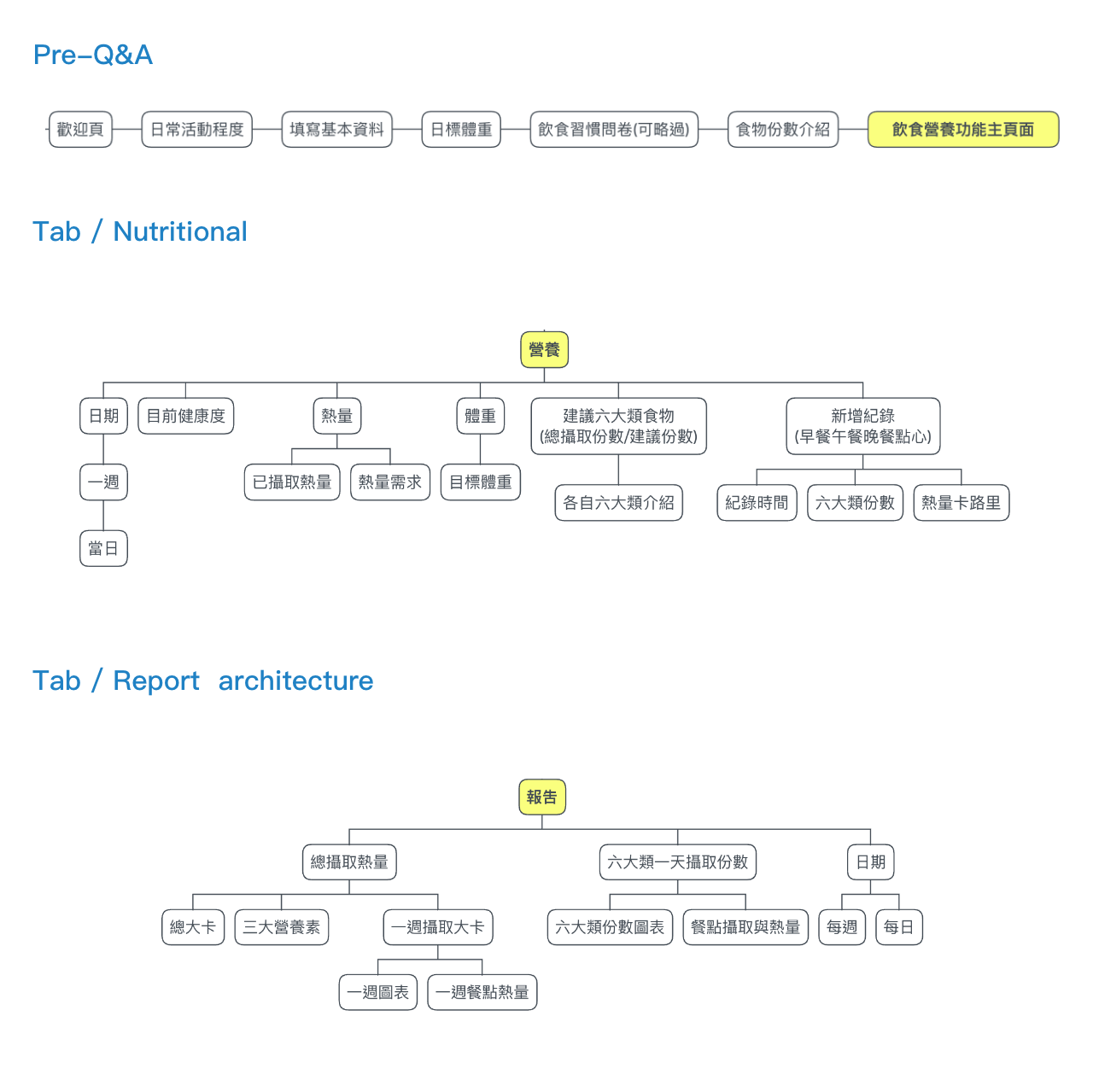
The above-mentioned User Story, Persona and core requirements are developed as follows:
1. Nutrition records: date, recommended calories, calorie intake, meal records, six categories of food, three major nutrients
2.Weekly analysis: analysis of one week’s meal intake and proportion of meals, as well as six categories of weekly intake scales
3.Health articles: articles related to nutritious diet.
Sketch & Wireframe
In the early stage of design, the prior brainstorming quickly thought of different solutions, and drew the idea into a sketch, and the ideal was verified the idea through the sketch and iteratively designed.

Choose the solution with the best ease of use, carry out Lo-fi wireframe Design, help me discuss with other stakeholders, and find the most feasible way to develop.
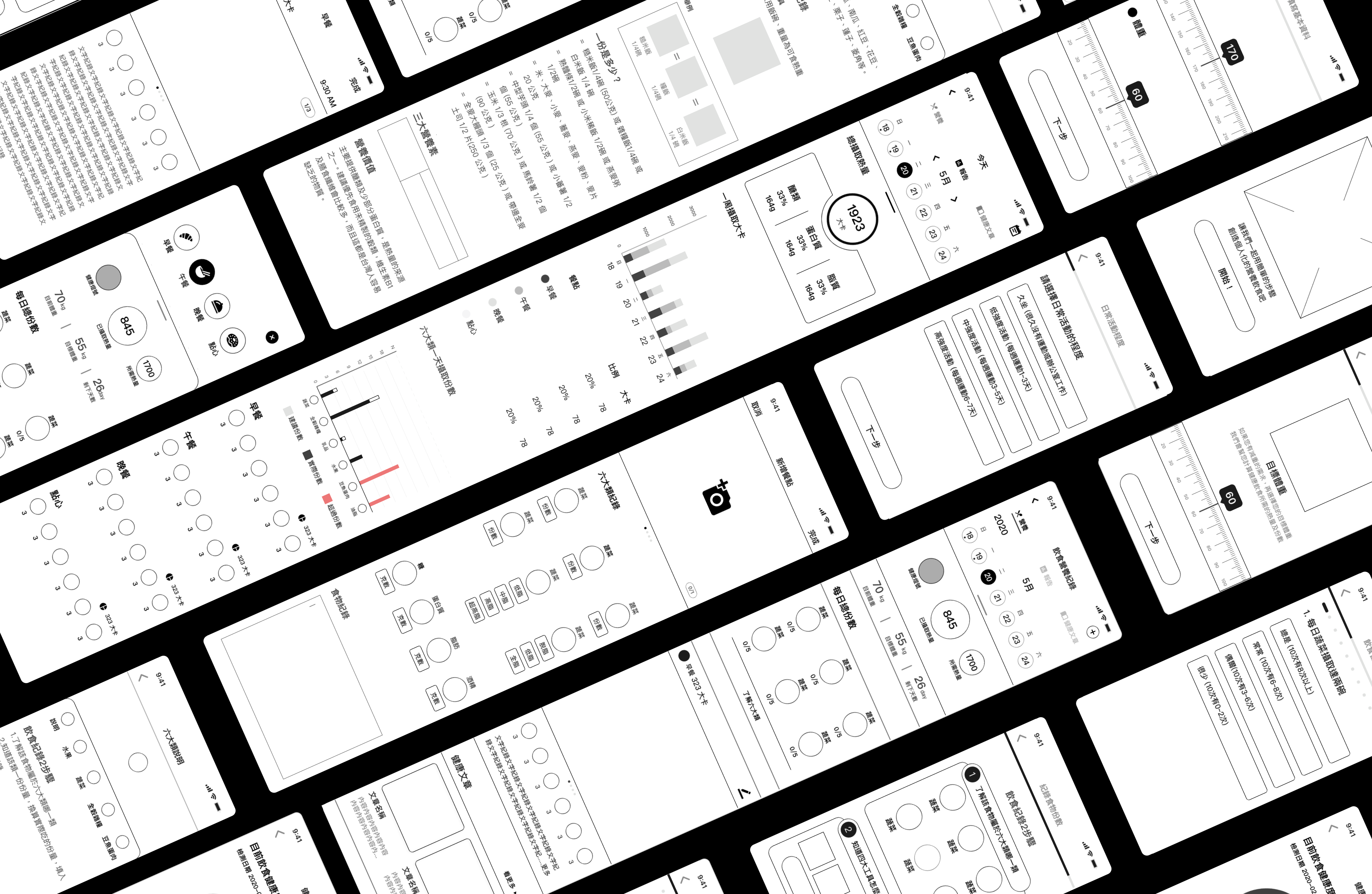
The following figure shows the differences in different stages of design.
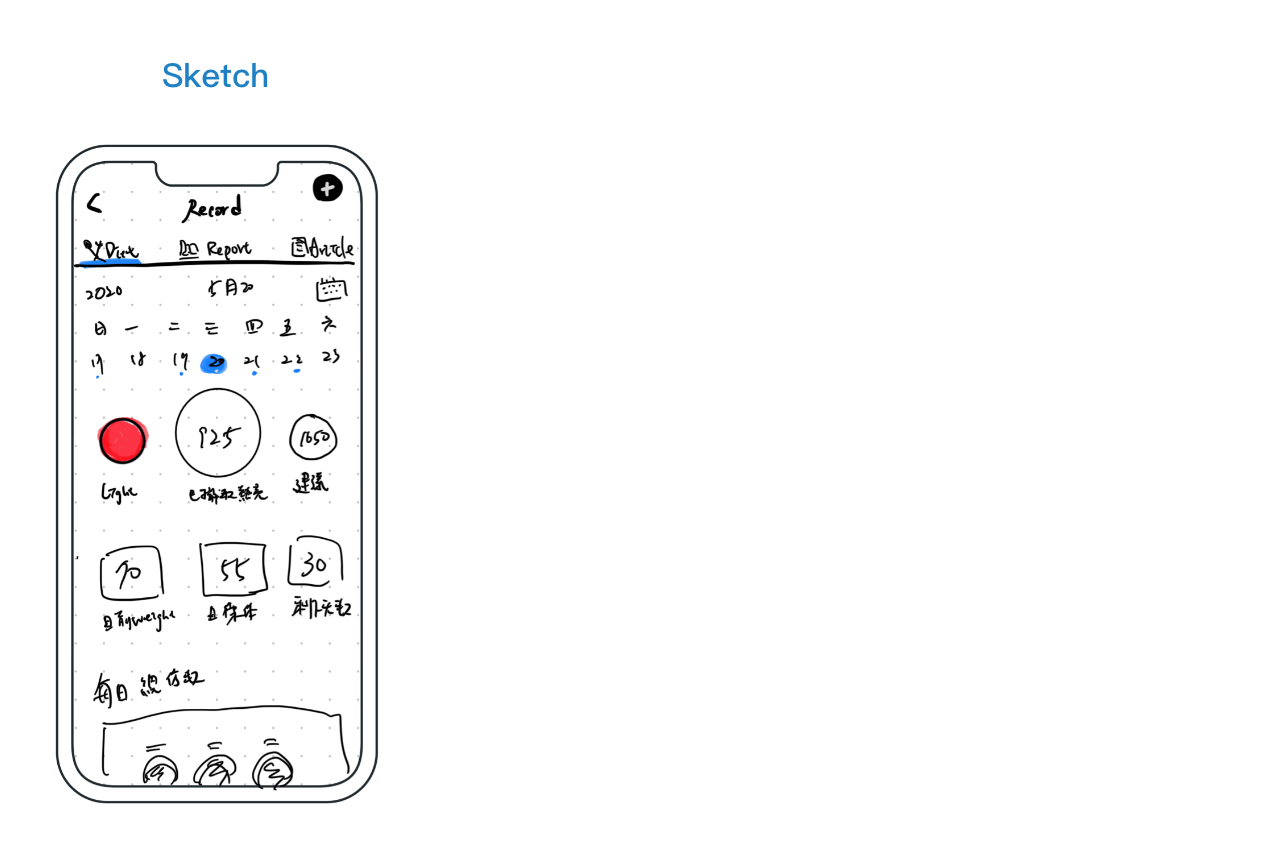
Design system
Apply and extend the company’s current color system, complete the design system, and define Font, Color palette, Icon style, Button, Inputbox, Component and other designs. The production design system can help products maintain design quality, consistency.

Prototype
Introduce app
The introduction of this main function will be guided by the first use meeting.
1.Start documenting each meal: using text and photos
2.Six Categories of Food: Balanced diet
3.Calories per meal: Write your own food diary
4.Out-of-home eaters: nutrition labels are calculated well
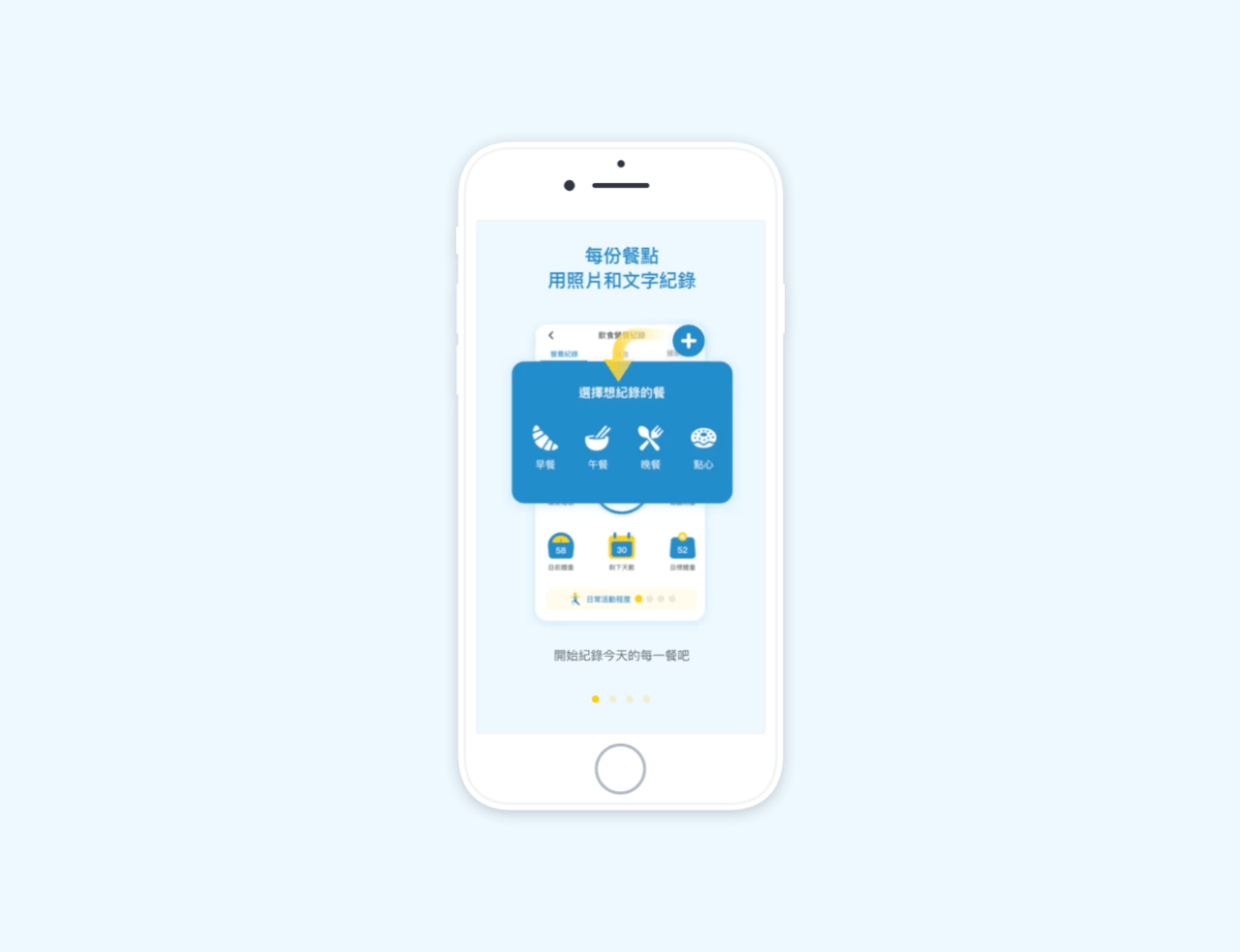
Pre-use quiz
Before using it for the first time, you need to fill in some content, such as evaluating your daily activity level, basic information, target weight, eating habits questionnaire, and introduction of food servings.
The above affects the calculation of calories and nutrition.
Fill in the target weight and target date. If it exceeds a reasonable range, there will be an warning to prevent the user from being too light or too heavy.
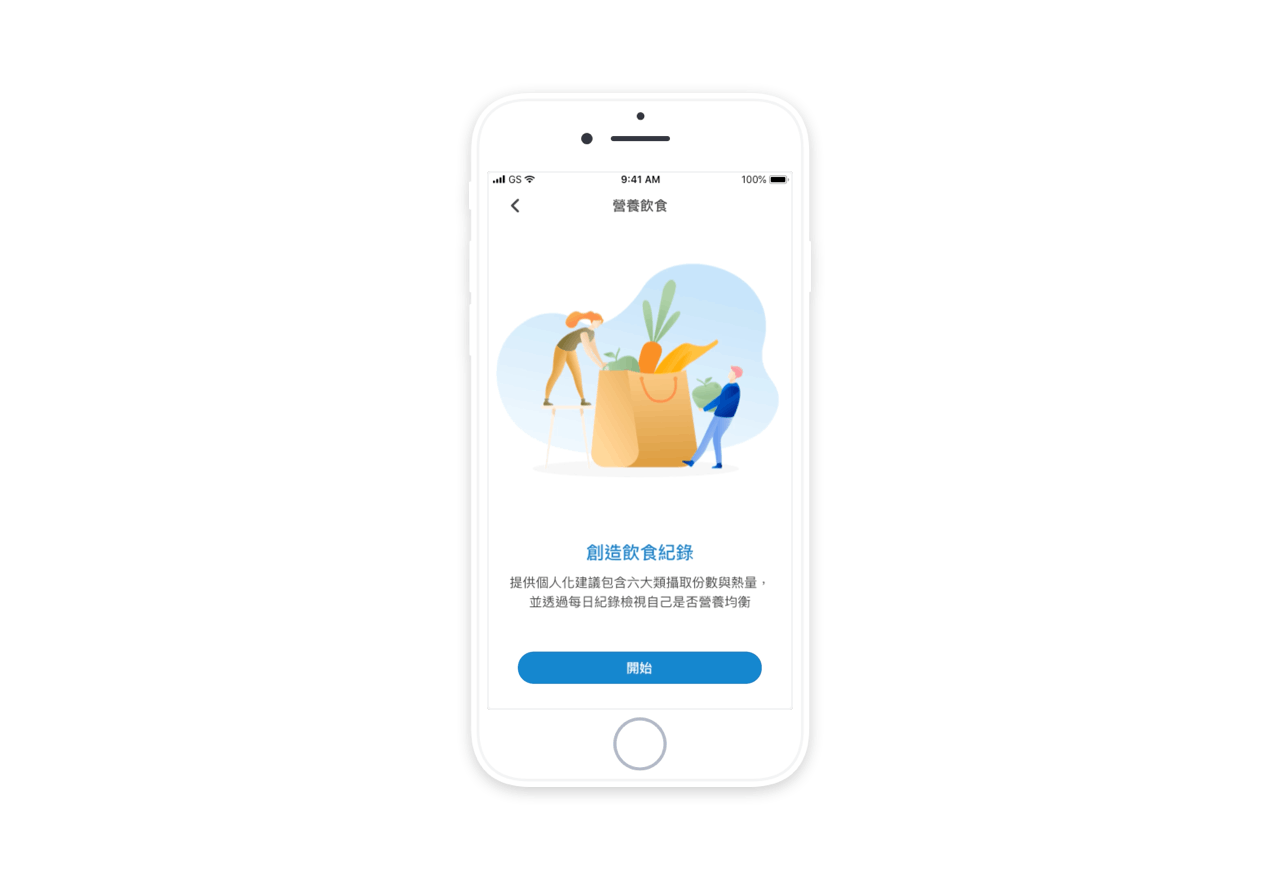

You can go to the corresponding place to re-fill and test.
The user’s current health light can be obtained through the dietary questionnaire. The test results are red, yellow, and green, representing the current health level and items that need to be adjusted.
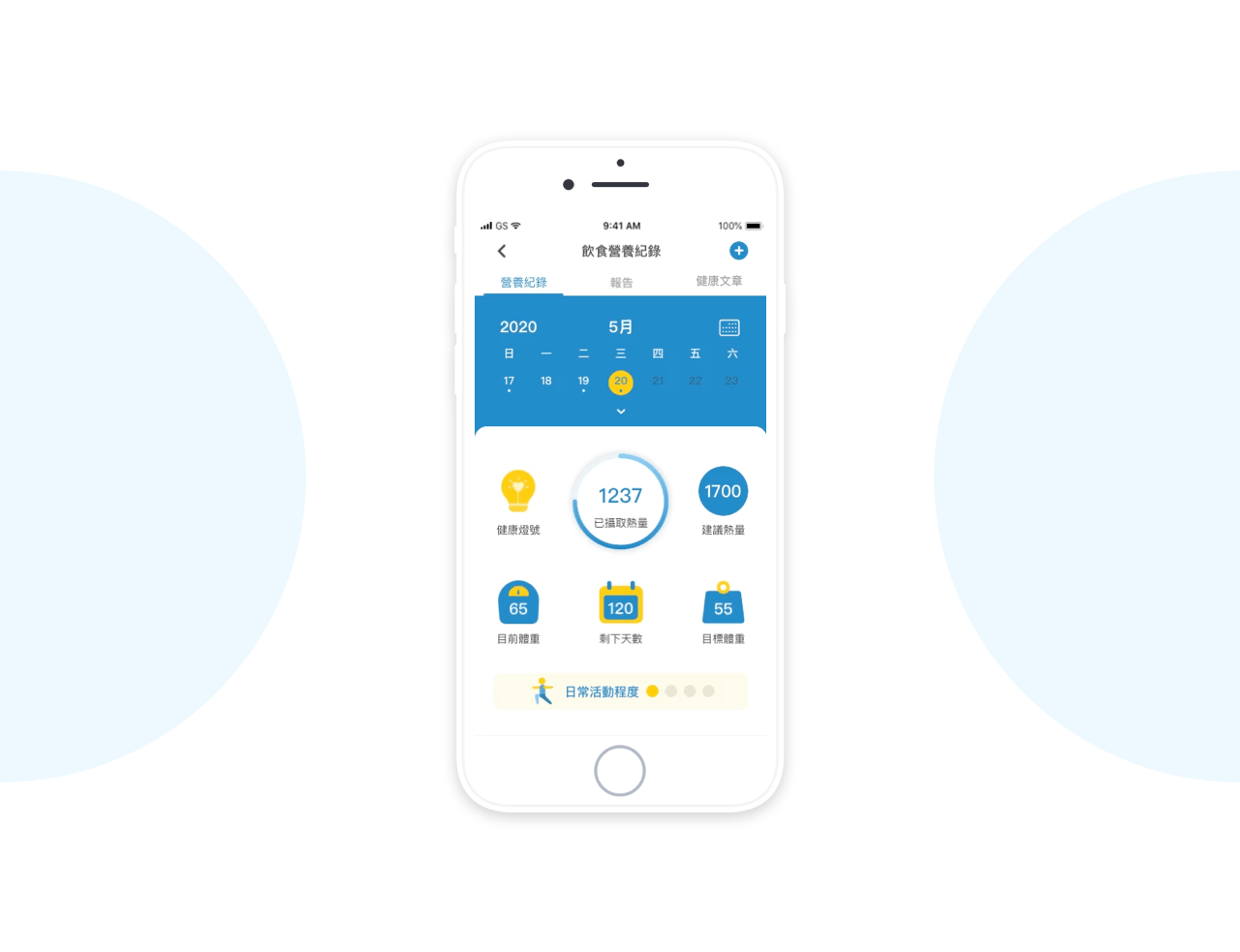
Add meal record
Select a meal category, write a meal note, upload a photo of the meal, and enter the number of servings in six categories of food. If there is a nutrition label on the food, it can be quickly entered, and it is suitable for use by people who eat outside.
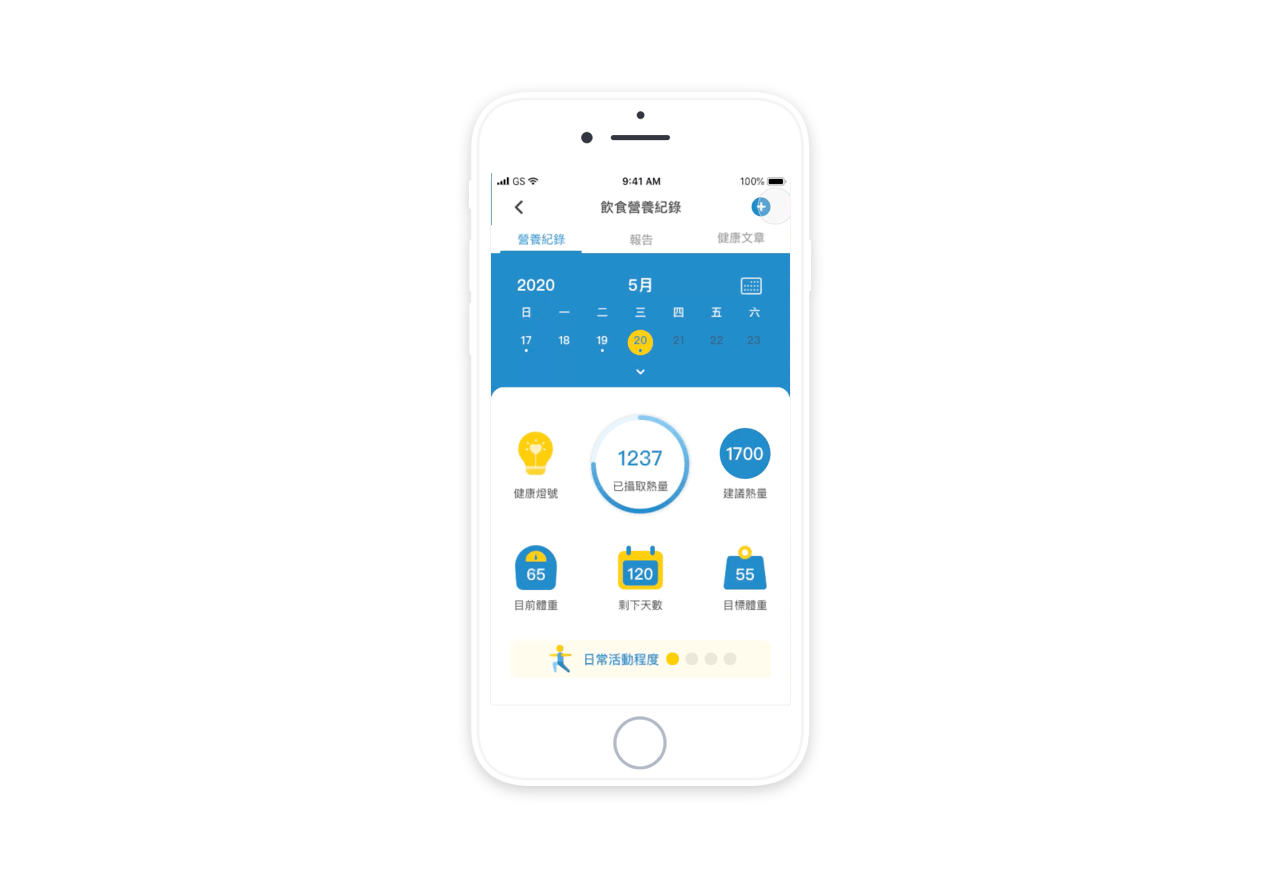
The records of each meal can be modified to include text, photos, food portions, and nutrition labels.
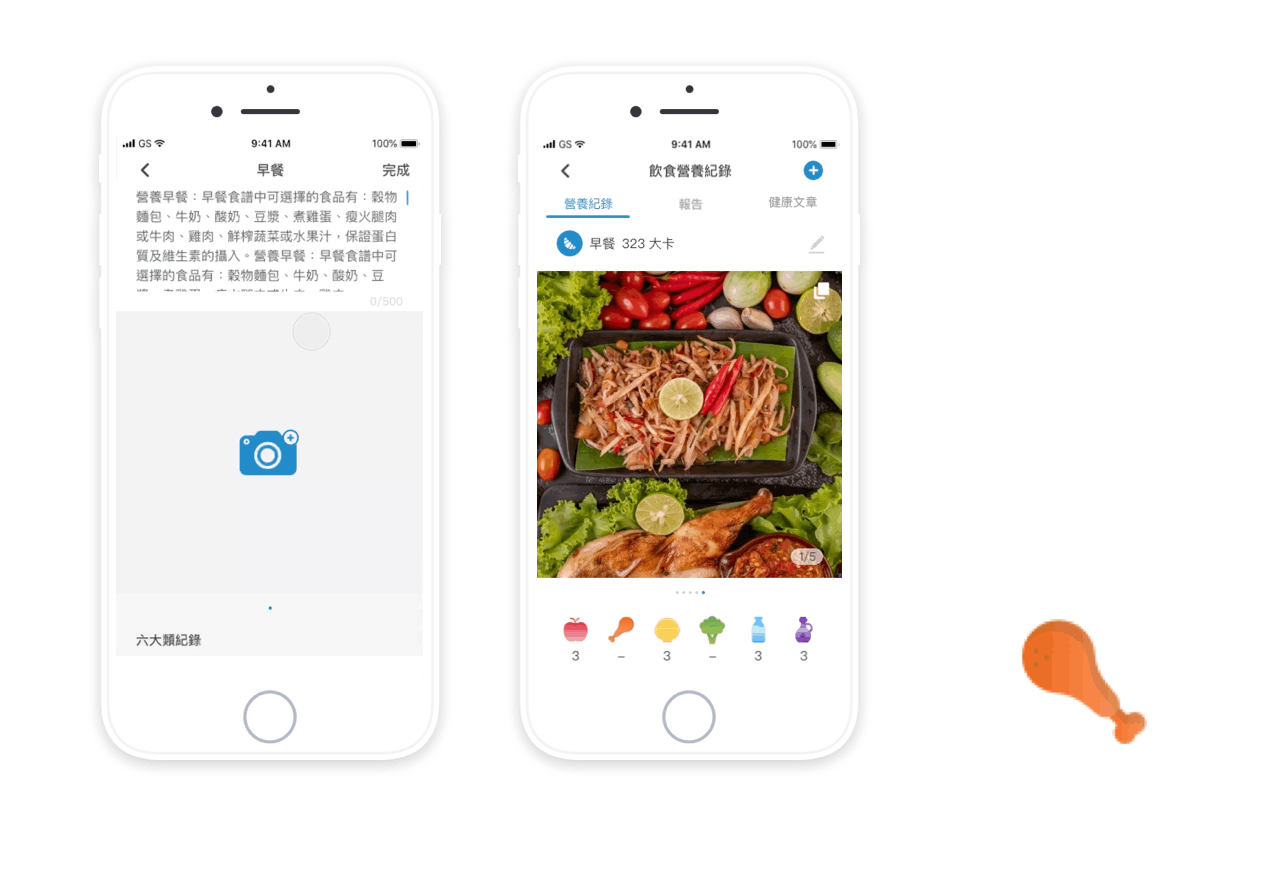
Instructions and Teaching
Guide users to understand the six categories of food, the concept of serving size, what measuring tools are and how to use them, and how to view the nutrition labels on take-out food.

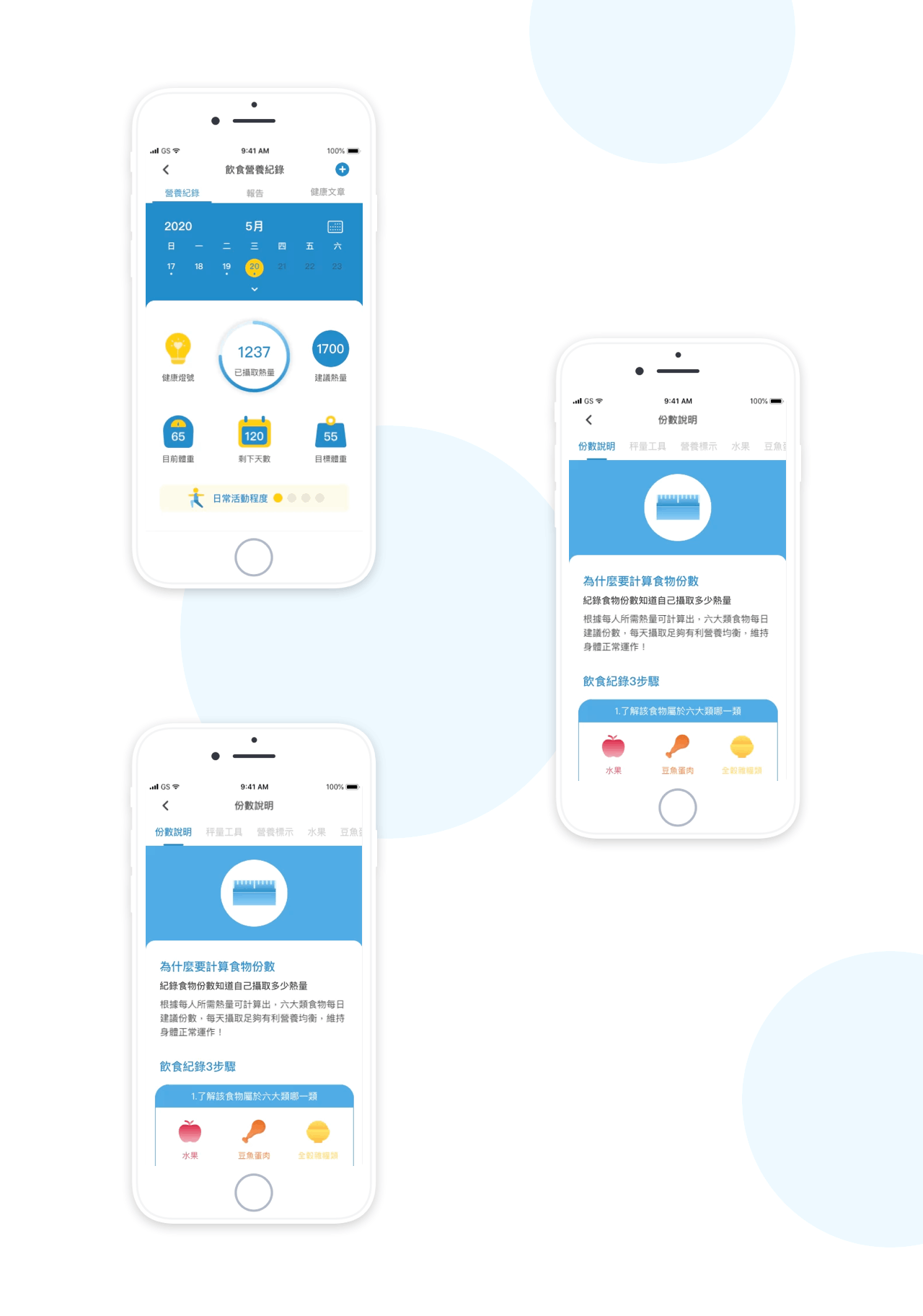
Weekly report
Help users to count various types of eating status and average calories in a week, and to understand whether there is too much or too little nutrition through Gantt chart.
